The Only 4 Knives You Need for Meat Prep: Your Ultimate Guide
For any home cook or aspiring grill master, having the right tools for the job is non-negotiable. While a single, all-purpose knife might seem like a practical choice, attempting to use it for every task from mincing garlic to breaking down a pork shoulder is a recipe for frustration, inefficiency, and even danger. The truth is, a few specialized knives can make all the difference in the quality of your prep work and the final result of your dish. This guide, The Only 4 Knives You Need for Meat Prep, will demystify the world of kitchen cutlery and show you why these four essential blades are all you’ll ever need to handle any meat-related task with confidence.
Investing in these specific knives is not just about having more tools; it’s about having the right tools. A proper knife makes the work safer, more precise, and frankly, more enjoyable. It allows you to make clean, efficient cuts that preserve the meat’s texture and juices, ensuring it cooks evenly and tastes its best.
1. Knife #1: The Chef’s Knife – The All-Purpose Workhorse
If you could only have one knife in your kitchen, it would be a chef’s knife. While it’s a general-purpose tool, it is indispensable for a wide range of meat preparation tasks, from initial breakdown to dicing.
Role in Meat Prep
The chef’s knife is the workhorse of your kitchen. Its primary role is to handle the heavy lifting, such as cutting steaks from a larger primal, cubing meat for stews, or mincing large quantities of herbs and aromatics for marinades and rubs. Its broad, curved blade is perfect for the “rock-chopping” motion used to quickly and efficiently process a variety of ingredients.
Key Features
- Blade Length: A standard chef’s knife is typically 8 to 10 inches long. The longer blade provides more leverage and surface area for cutting larger pieces of meat.
- Blade Shape: A curved blade allows for a fluid rocking motion, which is ideal for both mincing vegetables and cleanly separating muscle groups.
- Blade Material: High-carbon stainless steel is the most common and recommended material. It offers a great balance of edge retention, toughness, and resistance to rust and corrosion.
- Weight and Balance: A well-balanced chef’s knife should feel like a natural extension of your hand, with the weight distributed evenly between the handle and the blade.
How to Use It for Meat
For initial meat preparation, a chef’s knife is invaluable. Use it to slice a whole chicken into quarters, to cut large roasts or briskets into smaller sections, or to dice cubes of sirloin for a stew or kebabs. The strong blade can also be used to trim excess fat from a roast before cooking.
Internal Link: To understand the different cuts you can break down with a chef’s knife, check out our guide on Types of Meat Cuts.
2. Knife #2: The Boning Knife – The Precision Tool
While the chef’s knife is for brute force, the boning knife is for finesse. It is a specialized knife designed for the delicate and precise task of separating meat from the bone.
Role in Meat Prep
The boning knife’s primary purpose is to navigate around bones and joints with surgical precision. It’s the knife you’ll reach for when you need to remove the bone from a pork shoulder, debone a chicken, or trim a silver skin from a tenderloin. Its slim profile allows it to get into tight spaces and make clean cuts without tearing the surrounding meat.
Key Features
- Blade Length: A boning knife typically has a blade that is 5 to 6 inches long. This shorter length provides greater control and maneuverability.
- Blade Type: There are two types: flexible and stiff. A flexible boning knife is ideal for delicate work on poultry or fish. A stiff boning knife is better for working with larger, denser meats like beef and pork.
- Pointed Tip: The sharp, pointed tip is essential for piercing the meat and getting around tricky joints.
- Handle: A non-slip handle is critical for a boning knife. The delicate work it performs often involves a wet or greasy surface, so a secure grip is paramount for safety.
How to Use It for Meat
The boning knife is a specialist tool that can perform tasks no other knife can. Use it to separate the strip from the tenderloin on a T-bone steak, to clean the ribs on a rack of lamb, or to trim the tough silver skin from a beef tenderloin. The precision it provides ensures you get the most meat off the bone with minimal waste.
Internal Link: To see a boning knife in action, read our guide on The T-Bone Steak, as it’s the perfect knife for separating the two cuts.
3. Knife #3: The Butcher Knife – The Heavy-Duty Breaker
The butcher knife is the beast of your collection, designed for breaking down large cuts of meat, slicing through thick cartilage, and separating joints. It’s the closest thing to a cleaver in its power, but with the control and finesse of a large knife.
Role in Meat Prep
If you buy large primal cuts, such as a whole brisket, a pork shoulder, or a full rack of ribs, a butcher knife is essential. It’s too heavy for fine work, but its weight and rigid blade make quick work of tasks that would be difficult and dangerous for a smaller knife. It’s the perfect tool for prepping those tough, connective-tissue-filled cuts before they go into the smoker.
Key Features
- Blade Length: Butcher knives range from 6 to 10 inches in length. A longer blade is often better for a single-pass cut on large pieces of meat.
- Blade Type: A wide, heavy blade with a slightly curved tip. The heft of the knife is as important as its sharpness, as it uses weight to power through tough materials.
- Weight and Balance: This knife is intentionally heavy, with the weight distributed towards the tip. This forward-leaning balance aids in cutting through bone, fat, and cartilage.
How to Use It for Meat
Use a butcher knife to trim the massive fat cap off a brisket before smoking. It can also be used to cut through the rib bones of a rack of ribs to create individual ribs or smaller sections. Its weight makes it ideal for cutting through the tough connective tissue in a pork butt or shoulder.
Internal Link: Your new butcher knife will be invaluable for trimming and preparing a brisket, as detailed in our post on How to Smoke a Brisket (Texas-style).
4. Knife #4: The Slicing or Carving Knife – The Finisher
After all the prep work and cooking is done, the slicing knife is what brings your masterpiece to the table. This knife is designed for the final, elegant cuts that preserve the meat’s juices and presentation.
Role in Meat Prep
The slicing knife’s job is to carve cooked meat. It is not for prep work; it’s for the final act. Its long, thin blade makes it perfect for a single, clean pass through a large roast, a rack of ribs, or a perfectly smoked brisket. A clean slice is crucial because it ensures the juices stay in the meat, not on your cutting board.
Key Features
- Blade Length: A slicing knife is typically 10 to 14 inches long. This length is essential for carving large roasts or briskets in one fluid motion, without the need for multiple passes that can tear the meat.
- Blade Type: The blade is long and narrow with a rounded tip. Many slicing knives have “Granton” or “hollow ground” edges—small indentations along the blade that create air pockets, preventing the meat from sticking to the knife.
- Flexibility: The blade is usually more flexible than a chef’s knife, allowing it to follow the contours of a roast.
How to Use It for Meat
A slicing knife is what you’ll use to carve a perfectly roasted prime rib for a holiday dinner. It’s also the tool for cutting a perfectly smoked brisket into thin, uniform slices that look as good as they taste. Its long blade allows you to serve up a flawless presentation with minimal effort.
Internal Link: Once your brisket is perfectly smoked, a slicing knife is what you’ll need to serve it. See our How to Smoke a Brisket (Texas-style) guide for the final step.
Knife Care and Maintenance: A Guide to Longevity
Owning these four knives is just the first step. Proper care is essential to ensure they stay sharp and last a lifetime.
- Honing vs. Sharpening: A knife steel or honer is for honing, which realigns the blade’s edge to keep it straight. A sharpener actually grinds the blade to create a new, sharp edge. You should hone your knives every few uses and sharpen them every few months, depending on use.
- Proper Cleaning: Always wash your knives by hand with warm, soapy water immediately after use. Never put them in a dishwasher, as the high heat and harsh detergents can dull the blade and damage the handle.
- Storage: Don’t just toss your knives in a drawer. They can be damaged by other utensils and are a safety risk. Use a knife block, a magnetic strip, or individual blade guards to keep them safe and sharp.
Building Your Knife Block: A Buying Guide
Now that you know which knives you need, here’s a quick guide to getting started.
- Start with the Chef’s Knife: If you’re buying one at a time, start with a high-quality 8-inch chef’s knife. It will handle 90% of your initial prep work.
- Add the Boning Knife Next: Once you’re comfortable with your chef’s knife, the boning knife is the next logical step to open up more advanced cuts and techniques.
- Consider Your Needs: If you regularly smoke or roast large cuts of meat, the butcher knife and slicing knife are excellent additions. If you only grill steaks and burgers, you can probably get by with the first two.
For a great resource on selecting the best knife for your budget, a site like Serious Eats provides an excellent breakdown of various knife types and brands.
Conclusion
Mastering meat preparation is not about having a full block of a dozen knives; it’s about having the right four. The Only 4 Knives You Need for Meat Prep—the chef’s knife, boning knife, butcher knife, and slicing knife—will empower you to handle any cut of meat with confidence, precision, and safety. By investing in these essential tools and learning how to care for them, you’ll elevate your cooking from a chore to a craft and ensure every meal you make is a masterpiece.
FAQs:
Do I really need four different knives for meat? While you can get by with a chef’s knife, using a boning knife, butcher knife, and slicing knife for their specific tasks makes your work safer, more efficient, and results in cleaner cuts.
Can I use a chef’s knife for everything? A chef’s knife is versatile, but it is not designed for the precise work of deboning or the heavy-duty work of breaking down large cuts. Using it for these tasks can be dangerous and damage the knife.
What’s the difference between honing and sharpening? Honing a knife realigns the blade’s edge to keep it straight. Sharpening grinds the blade to create a new, sharp edge. Honing should be done frequently, while sharpening is done less often.
Why do slicing knives have dimples on the blade? The dimples, called “Granton” or “hollow ground” edges, create small air pockets that prevent thin slices of meat from sticking to the blade.
What’s the best way to clean my knives? Always wash your knives by hand with warm, soapy water and dry them immediately. Never put them in the dishwasher.

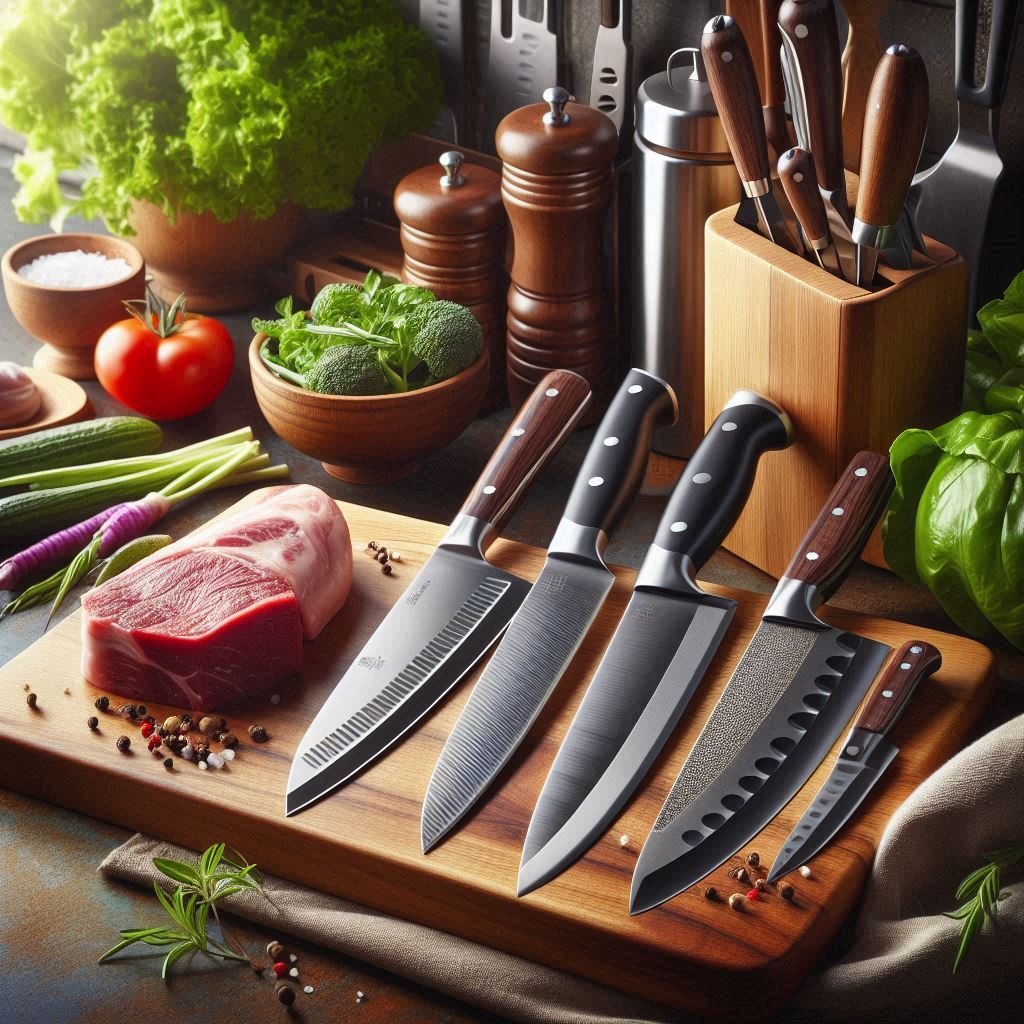

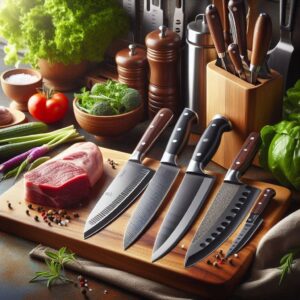
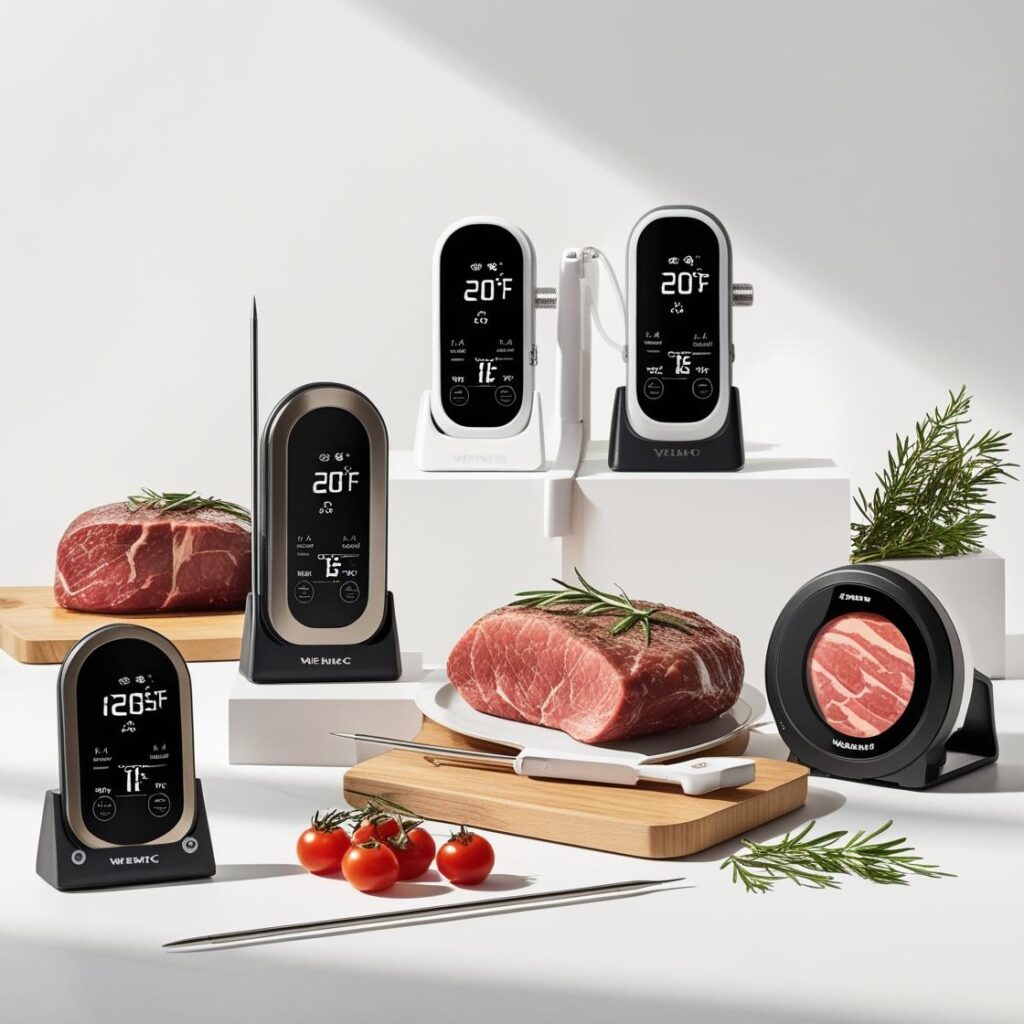
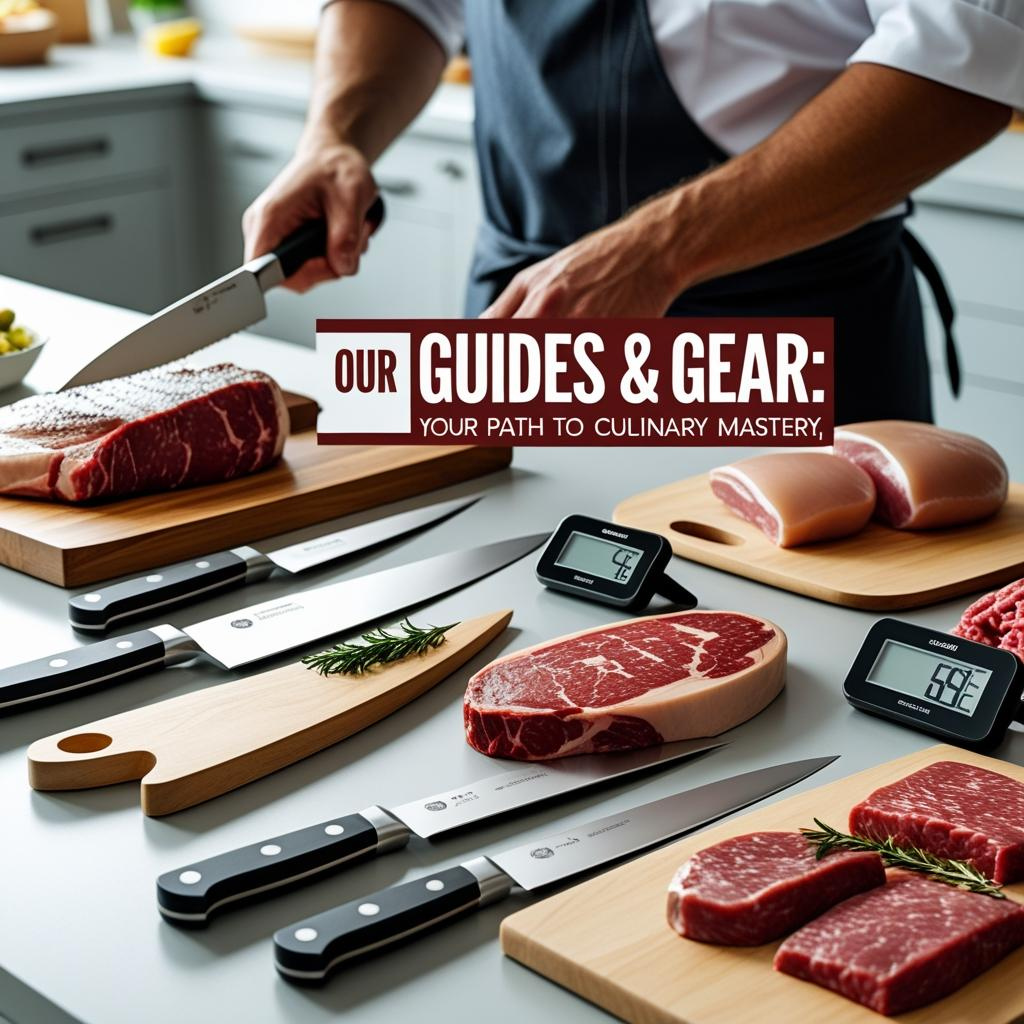
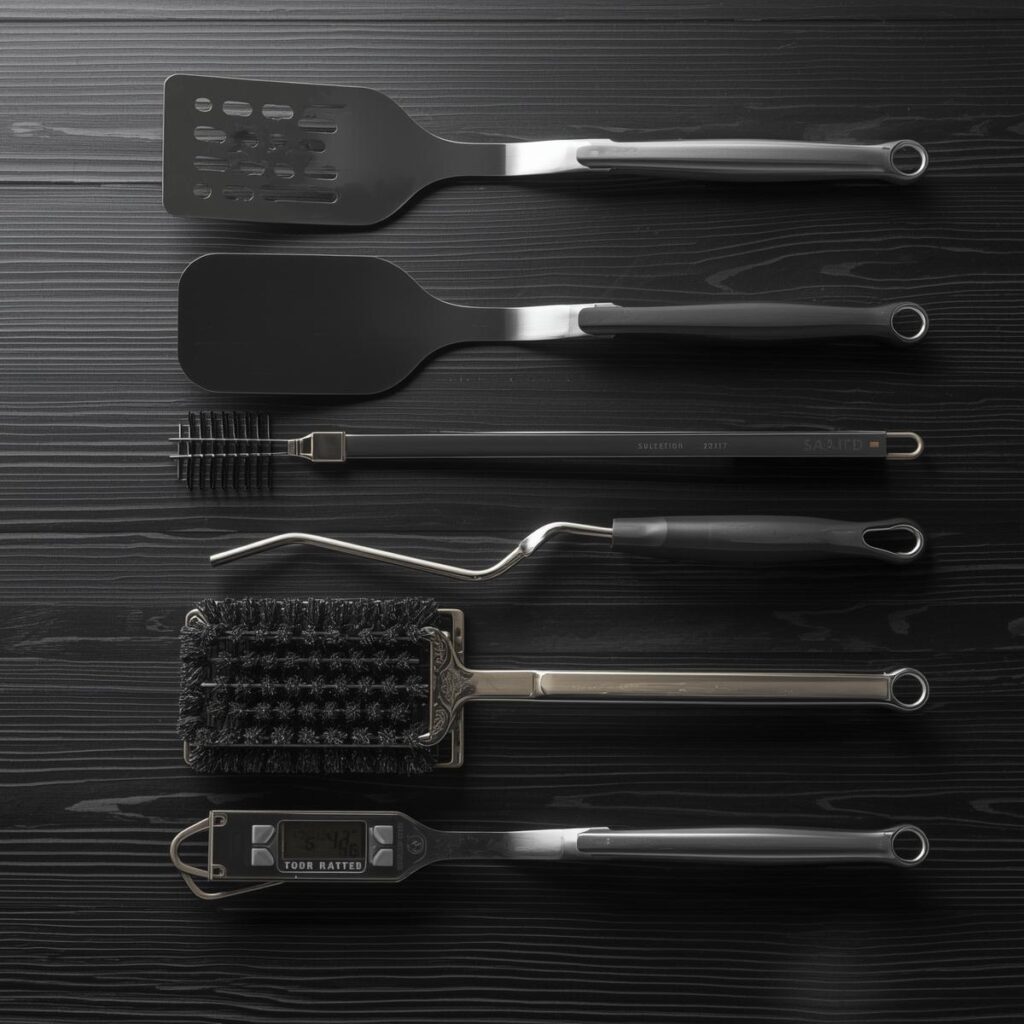

Pingback: Master the Cuts: Our Story and Mission to Help Home Cooks
Pingback: Meat Cutting Tips: A Butcher's Guide to Perfect Slices (2025)
Pingback: Baby Back Ribs Recipe | The Meat Master USA – 2025
Pingback: Lamb Chops Recipe - The Meat Master USA - 2025
Pingback: Roast Beef Recipe - The Meat Master USA - 2025
Pingback: How to Braise Meat for Maximum Tenderness
Pingback: Essential BBQ Tools You Need: The Ultimate Guide - The Meat Master USA
Pingback: Barbacoa Recipe - The Meat Master USA - 2025
Pingback: essential-knives-for-meat-prep